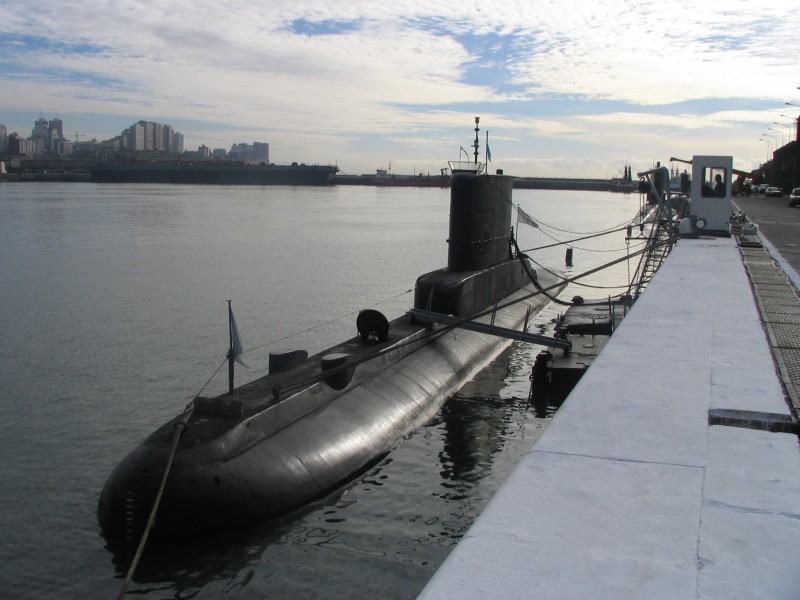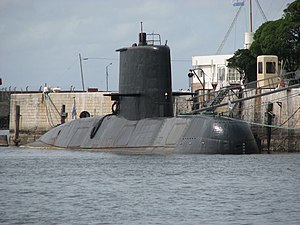Virginia class submarine

The Virginia class (or SSN-774 class) of attack submarines are the first U.S. subs to be designed for a broad spectrum of open-ocean and littoral missions around the world. They were designed as a cheaper alternative to the Cold War era Seawolf-class attack submarines, and are slated to replace aging Los Angeles class subs, seventeen of which have already been decommissioned.
Innovations
The Virginias incorporate several innovations. Instead of periscopes, the subs have a pair of extendable "photonics masts" outside the pressure hull. Each contains several high-resolution cameras with light-intensification and infrared sensors, an infrared laser rangefinder, and an integrated Electronic Support Measures (ESM) array. Signals from the masts' sensors are transmitted through fiber optic data lines through signal processors to the control center. The subs also make use of pump-jet propulsors for quieter operations. Construction and controversy
Construction and controversy
The Virginias were intended, in part, as a cheaper ($1.8 vs $2 billion) alternative to the Seawolf class, whose production run was stopped after just three vessels. To reduce costs, the Virginias use many "commercial-off-the-shelf" (or COTS) components, especially in their computers and data networks. In practice they actually cost about $2.3 billion (in fiscal year 2005 dollars) each, due in part to the lack of an economy of scale.
In hearings before both House of Representatives and Senate committees, the Congressional Research Service and expert witnesses testified that the current procurement plans of the Virginia class—one per year at present, accelerating to two per year beginning in 2012—resulted in high unit costs and (according to some of the witnesses and some of the committee chairmen) an insufficient number of attack submarines. In a March 10, 2005 statementto the House Armed Services Committee, Ronald O'Rourke of the CRS testified that, assuming the production rate remains as planned, "production economies of scale for submarines would continue to remain limited or poor."
The Virginia class is built through an industrial arrangement designed to keep both GD Electric Boat and Northrop Grumman Newport News (the only U.S. shipyards capable of building nuclear vessels) in the submarine-building business. Under the present arrangement, the Newport News facility builds the stern, habitability & machinery spaces, torpedo room, sail and bow, while Electric Boat builds the engine room and control room. The facilities alternate work on the reactor plant as well as the final assembly, test, outfit and delivery.
O’Rourke wrote in 2004 that, "Compared to a one-yard strategy, approaches involving two yards may be more expensive but offer potential offsetting benefits." Among the claims of "offsetting benefits" that O'Rourke attributes to supporters of a two-facility construction arrangement is that it "would permit the United States to continue building submarines at one yard even if the other yard is rendered incapable of building submarines permanently or for a sustained period of time by a catastrophic event of some kind", including an attack. In order to get the submarine's price down to $2 billion per sub in FY-05 dollars, the Navy instituted a cost-reduction program to shave off approximately $400 million in costs off the sub's price tag. The project was dubbed "2 for 4 in 12," referring to the Navy's desire to buy two subs for $4 billion in FY-12. Under pressure from Congress, the Navy opted to start buying two subs a year earlier, in FY-11, meaning that officials would not be able to get the $2 billion price tag before the service started buying two subs per year. However, program manager Dave Johnson said at a conference on March 19, 2008, that the program was only $30 million away from achieving the $2 billion price goal, and would reach that target on schedule.
In order to get the submarine's price down to $2 billion per sub in FY-05 dollars, the Navy instituted a cost-reduction program to shave off approximately $400 million in costs off the sub's price tag. The project was dubbed "2 for 4 in 12," referring to the Navy's desire to buy two subs for $4 billion in FY-12. Under pressure from Congress, the Navy opted to start buying two subs a year earlier, in FY-11, meaning that officials would not be able to get the $2 billion price tag before the service started buying two subs per year. However, program manager Dave Johnson said at a conference on March 19, 2008, that the program was only $30 million away from achieving the $2 billion price goal, and would reach that target on schedule.
In December 2008, the US Navy signed a $14 billion contract with General Dynamics and Northrop Grumman, to supply eight submarines; the contractors will deliver one submarine in each of fiscal 2009 and 2010, and two submarines on each of fiscal 2011, 2012 and 2013. This contract will bring the Navy's Virginia-class fleet to 18 submarines.
On 21 June 2008, the Navy christened the New Hampshire (SSN-778), the first of the Block II boats. The submarine was delivered 8 months ahead of schedule and $54 million underbudget. The Block II boats are built in four sections, compared to the ten sections of Block I boats. This enables a cost savings of $300 million per boat, reducing the cost to $2 billion per boat and the construction of two boats per year. Beginning in 2010, new vessels of the class will include a software system that can monitor and reduce EM signatures when needed.
Technical information
General characteristics
• Builders: GD Electric Boat and Northrop Grumman Newport News
• Length: 377 ft (114.91 m)
• Beam: 34 ft (10.36 m)
• Displacement: 7,800 tons
• Payload: 40 weapons, special operations forces, unmanned undersea vehicles, Advanced SEAL Delivery System (ASDS)
• Propulsion: S9G reactor
• Max. diving depth: greater than 800 ft (244 m)
• Speed: 25+ knots
• Planned cost: about US$1.65 billion each (based on FY95 dollars, 30-ship class and two ship/year build-rate, which has not yet been authorized)
• Actual cost: about $2.5 billion each (as of SSN-776, 2007)
• Crew: 120 enlisted and 14 officers
• Armament: 12 VLS & 4 torpedo tubes, launching UGM-109 Tactical Tomahawks & Mark 48 torpedoes (ADCAP), and is advanced mobile mine capable.



